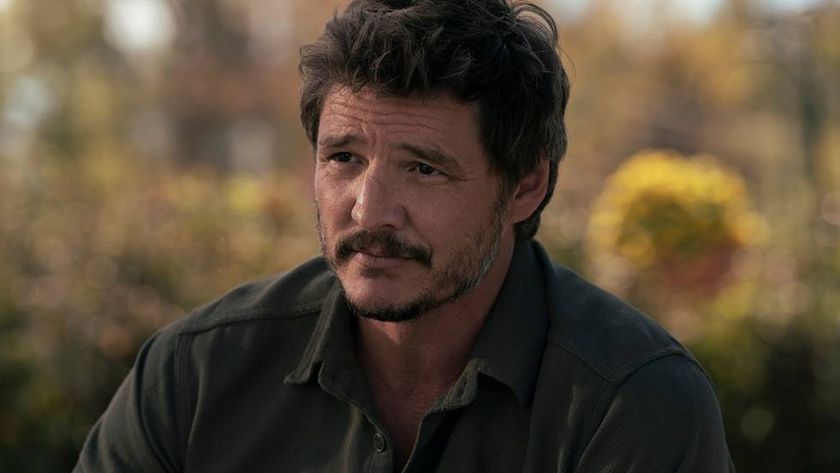The 3D for London's live Who exhibition was created by Simon Clarke's team at Prime Focus, who also worked on the award-winning Wonders Of The Solar System

The Doctor Who Experience in London; the Wonders Of The Solar System TV show; the upcoming Terry Pratchett City Watch series... if you're not familiar with the firm Prime Focus yet some reading up is in order, since they're the production company behind a lot of cool stuff at the moment. Founded in 1997 in India, Prime Focus has grown into a leading international visual effects group by acquiring or recruiting experienced people across five continents. Simon Clarke, Creative Director of the Prime Focus Broadcast VFX department , is one of the 3,500 staff Prime Focus now employs, and we spoke to him at his London base recently about his team's pioneering work:
SFX: So what went into creating the Doctor Who Experience?
Simon Clarke: We were approached by the show designers, Sarner, who came up with the concept and who were commissioned by the BBC to put the show together. Their director was very keen to incorporate CG with practical sets, props, lighting, and blurring the boundaries. We worked on several bespoke sequences, including the big finale - a stereoscopic sequence travelling through a "timefield space vortex" which was integrated within the Pandorica chamber. In that sequence we really played the negative plane to our advantage, to get those moments where the audience feels they can touch things coming out of the screen.
There were real things added to the CG effects. We used physical backdrops, 50 by 60 feet, with set painters putting stars on them. We had spaceships flying around, and then these reveals. The visitor is standing in a spaceship, and the windows open up so it feels like you've got these Dalek spaceships coming towards you. It's great fun to work on, your imagination is the limit really.
Whereas, working on something like Wonders Of The Solar System , you've got to make it real. The BBC hadn't made a series about space for ten years. They wanted to be very true to the images sent back from probes like Cassini and the Hubble Space Telescope. Because a lot of the visual effects sequences were being cut with a presenter who was physically holding these images, there had to be a level of authenticity to reinforce those images. We went through a very stringent grounding, bringing the two together. We had to make sure that the scale and texture matched the colour palettes properly. We built Saturn's rings as they would have been built, exactly as they appear on the image. We wanted to get closer than the image. We were seeing complex systems; for example when you've got a gaseous surface, there's not just one wind direction, you've got all sorts of stuff, they move in weird sorts of ways. So you know that it needed to be as true as we could make it, from whatever reference or research we could come up with. So although those images were the basis of the shot, they were static, we had to make them move.
SFX : Were you a Doctor Who fan before?
Sign up to the SFX Newsletter
Get sneak previews, exclusive competitions and details of special events each month!
SC: I wasn't, but I am now. My kids have kept me up to speed. We went to see the exhibition and I met a Cyberman face to face! That's the acid test really, seeing people's reactions to what you've spent months creating. If they're not getting the effect of the 3D then it hasn't delivered what it was supposed to. It's nice to do these projects in between shows we make for broadcasters. It's a breath of fresh air because the format lends itself to "experiential" - I'm sure that more museums and natural history museums will go down this route.
SFX : So science museums can learn from things like Doctor Who ?
SC: We're already creating work for that kind of genre. There are skill sets and experience that are easily transferable between the two. The experience in creating work for a broadcast space show could easily be used in the Science Museum or creature FX work in The Natural History Museum. People are used to going to the cinema and seeing 3D. If you can create that level of interactivity and something that feels visually polished, you've got a really good formula to entertain and inform people. We've got another project out next year for an American museum which involves the use of different formats.
SFX : Is your background in science?
SC: I work in Broadcast; that pretty much covers the "specialist"-type genre. Clients like the BBC. And we work with production companies too, who are getting commissions from Discovery and the History Channel. The core of our business is on fairly long productions like Wonders Of The Solar System , where they've normally been in production with us in studio from anywhere from nine to 18 months, making 30 to 40 minutes of CG material for a show.
I worked for the BBC 17 years ago on Tomorrow's World . So I've always kind of been involved in the science genre! I had my own company for six years; I sold it to Prime Focus three and a half years ago. Since that time I've managed to maintain a global client base. The reason for joining Prime Focus was to capitalise on the structure and the global presence it had with facilities in London, North America and India.
We have a core team of artists that are dedicated to effects in the broadcast industry. Depending on what projects we've got coming in, we tend to run a smaller core team, and then bring people in that specifically work on one project, based on what sort of skill set, what they can bring both technically and creatively to the project.
SFX : We remember Tomorrow's World - were you doing 3D there?
SC: My role was actually as graphic designer. We'd normally get about three to four days to work on a sequence, which would be going out on air. So we'd get a producer coming in on Monday afternoon with a brief for a show that was going out on Thursday, and you pretty much had to come up with something there and then, and make sure that it looked good and was finished. That sort of grounding is useful to apply to the broadcast model: there's always high expectations because it's all based around what people are seeing in feature films, but you've got the restrictions of really short periods of time.
There're restrictions in relation to budgets as well. It's license payer's money as opposed to box office sales. The core business is effects and over the years, I have worked with many companies on science-type shows. I worked on the very first show for the London Planetarium, Madame Tussauds. At the time, no one had ever really done 3D models! Whereas now, on the Doctor Who Experience, 15 years later, we're doing full stereoscopic, so you can see characters jumping out of the screen and you really get the benefit of the format.
SFX : What kind of tools do you use? Do you have some kind of bespoke system here?
SC: Most of the stuff is pretty much created using off the shelf software like Maya , Fusion and Nuke . There were a few things we scripted, like the surface of Jupiter for example, just because there's such a complex kind of algorithm and we couldn't get the authenticity straight out of the box. The difference between broadcast and film is time and budget! You've really got to think about putting an extensive amount of budget into R and D. Ultimately TV doesn't really see the value of it. You need to be able to justify that, the time and expense of having someone work on projecting the image of the clouds on Jupiter for three months, before creating the shot! We use lots of different combinations: photographic images, real elements, cloud tanks. It was a lot of late nights and hard work but we certainly got the results we were hoping for culminating in several international awards and a BAFTA nomination.
SFX : How about the practical side of rendering stuff? I know that CG shots can take days to render! How long does it take to make a shot after doing the research?
SC: The rendering side of things proportional to the overall creation of the shot is relatively small. Yes it's true that scenes with things like CG waves, something fluid, are heavy to render because there's a lot of processing and simulation going on. When you're working on a solid state object, where you're creating a textured environment, these tend to render a bit quicker! The work is really in building a level of detail and scale into your texture map in the first place and actually applying those textures in a way that they become workable on a workstation, substituting the high res assets at the point of final rendering. With a planet shot for example we often want to be able to see detail, but also to pull back and see the whole thing in a wide shot. If you have all that data on your workstation the thing would really lag. You've got to remember when your pre-visualising you can't always gauge the correct speed of the camera until the textures are on it. The artists have to compensate for that. We found this with a lot of planet Earth projects - adding the full resolution texture will often require the camera to be slowed down more. You need to make the shot feel weighty and real.
SFX : So will you be working on the new Terry Pratchett series?
SC: That's the plan yeah. We will be discussing the project internally with the newly developed production arm of the business. On one side of the business is the science-type work and on the other is drama, which my colleague Piers Hampton heads up. The aim is to get the volume of drama-type effects up to the same level as what we're doing for science.
SFX : Thanks Simon!
You can see a video of us talking to Terry Pratchett and a team from Prime Focus here . In the meantime, remember to visit the Doctor Who Experience this month. On Friday 12 August there's "Walk Like A Monster" day (Ailsa Berk, choreographer for Doctor Who , will be hosting live monster masterclasses and teaching visitors how to move like the Cybermen) and on Wednesday 24 August there's a demonstration of the make-up and prosthetics which go into creating the reptilian Silurians.
SFX Magazine is the world's number one sci-fi, fantasy, and horror magazine published by Future PLC. Established in 1995, SFX Magazine prides itself on writing for its fans, welcoming geeks, collectors, and aficionados into its readership for over 25 years. Covering films, TV shows, books, comics, games, merch, and more, SFX Magazine is published every month. If you love it, chances are we do too and you'll find it in SFX.

Filming has started on the second season of beloved Hulu show Paradise, only weeks after the hit Disney Plus show ended

The Last of Us' Neil Druckmann has a cryptic response to whether the TV show could pull a Game of Thrones and continue beyond the games: "I leave nothing on the line"











